OP Sequence
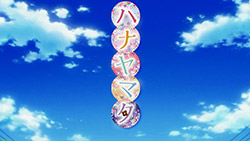 |
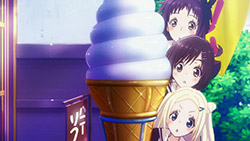 |
 |
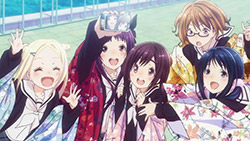 |
 |
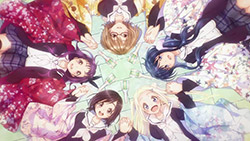 |
OP: 「花は踊りレヤいろはにほ」 (Hana wa Odori Reya Iroha ni Ho) by チーム”ハナヤマタ” (Team Hanayamata)
 |
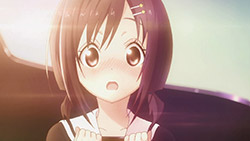 |
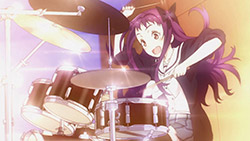 |
 |
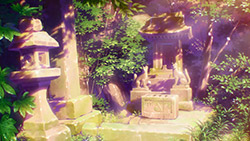 |
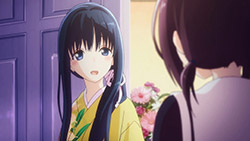 |
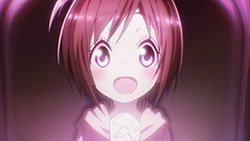 |
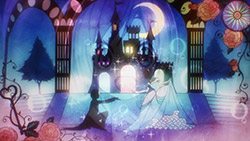 |
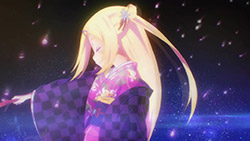 |
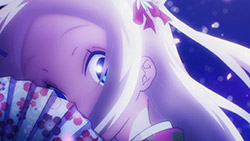 |
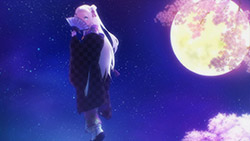 |
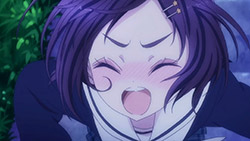 |
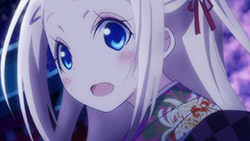 |
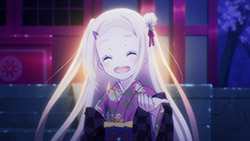 |
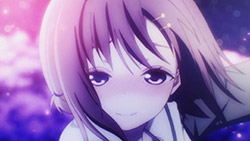 |
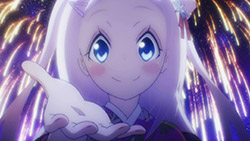 |
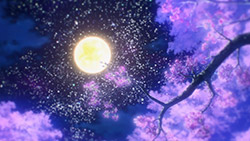 |
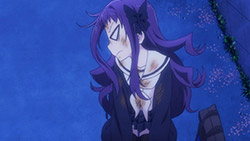 |
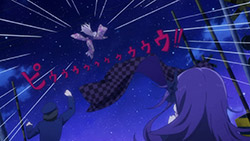 |
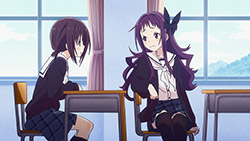 |
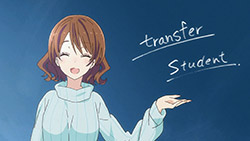 |
 |
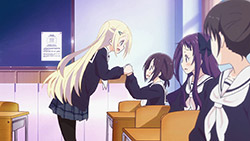 |
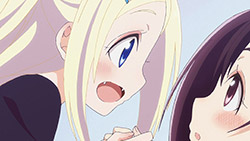 |
 |
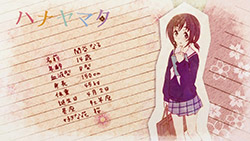 |
 |
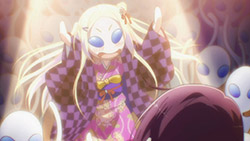 |
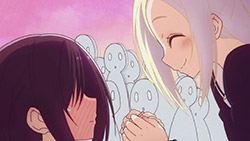 |
 |
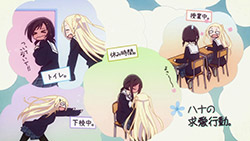 |
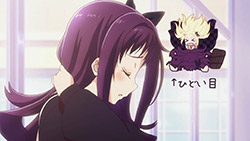 |
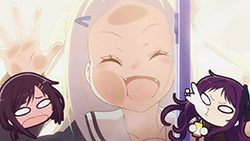 |
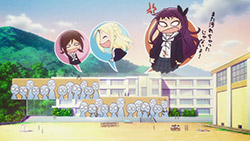 |
 |
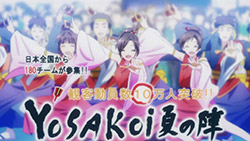 |
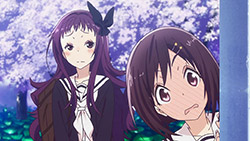 |
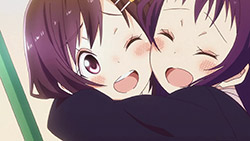 |
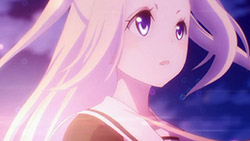 |
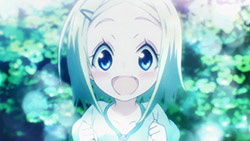 |
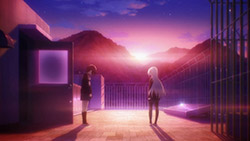 |
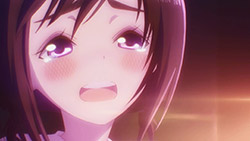 |
「シャル。ウィ。ダンス?」
“Shall We Dance?”

Excuse the new format, but I’m finally going to try some new post styles again. Let me know in the comments what works and what doesn’t!
Anyways, welcome dear reader to Hanayamata, a story by Sou that’s about cute girls and beautiful dances on the surface, with all the emotional themes that revolve around that premise. Sekiya Naru (Ueda Reina) is an average girl, looking for a fairytale like fantasy to sweep her away. Although she enjoys the company of her excellent-in-everything best friend Sasame Yaya (Okuna Kaya) and affluent vice-president Nishigomon Tami (Ootsubo Yuka), being in their shadows takes a quiet toll on her self-esteem. One day, as Naru wishes to be swept away, a mysterious ‘fairy’—Hana (Tanaka Minami)–dances on top of a torii gate. After a failed attempt to sweep Naru (and her heart) away, a number of events occur, with Hana conveniently transferring to Naru’s school and starting a Yosakoi club, hoping that Naru will join her in dancing once more.
However, what exactly is yosakoi dancing. In a nutshell, yosakoi dance evolved from the more traditional Awa dance, combining modern music with traditional dance and clothing. As a reference, Golden Time featured Awa Odori prominently. The fact that the show highlights both Naru’s lack of knowledge about the dance as well as Hana’s love of the dance as a foreigner is reflective of the current rising popularity of the dance domestically and globally. Fellow UC Berkeley students, the Nikkei Student Union happens to have a yosakoi dance group you should check out!
This combination of old and new, east and west, and shy and spontaneous is just one way that distinguishes Hanayamata from the crowd. Additional hope comes from the presence of a strong production team. With Madhouse and Ishizuka Atsuko (Sakurasou no Pet na Kanojo, Tsuki no Waltz) fresh from No Game No Life last season, it’s a good sign that this pairing will work on Hanayamata for the summer. However, those expectations can also become a burden–can we expect the same sort of successes from No Game No Life to transfer over here? Let’s find out!

For a first episode, the show performed amazingly well in animation and okay in pacing. As is usual in visual media, it’s very troublesome to get introductions out-of-the-way while setting up a plot to continue throughout the story, all while fitting it within a 20 minute time frame. Here, Hanayamata falls to some of those traps. For a surprisingly deep subject given the premise, the show really did go straight for Naru’s emotions immediately. The episode gets straight to the point, but without enough time to properly invest ourselves in Naru’s scenario, the intended emotional payoff is watered down. This is more a problem with the source material, as the same events happened similarly in the manga (with the exception of the added band scene).
The comedic bits are executed well enough that the show doesn’t feel too dampened by Naru’s melancholy, but there’s this sort of uneasiness in what type of tone the show tries to portray as a result. The mixture of these gags with the drama makes one wonder what type of episode they were aiming for. This’ll even out as the show progresses, but this sort of indecisiveness only leads to average enjoyment, since the average viewer is unsure of how to approach the show.
However, on a more positive note, the art is amazing, especially in the backgrounds and during the dancing segments. One may wonder why there’s so many cherry blossoms flying around constantly, but that’s a minor gripe in what’s sure to be an excellent art style this season. Similar to No Game No Life’s art style, the colors are rich. There’s a wonderful use of gradient, blurring techniques, and lighting effects in every scene. The backgrounds are excellent, especially during scenes of the sky or scenes around town at night. The character designs are drawn very well, with consistency in quality throughout and only a few minor 2nd-animation errors. Some may find the weird angling of the eyes a bit jarring, but with most of the characters in motion anyways, this becomes a lesser problem. The gags, although a comedic gamble, are drawn well and are cinematically creative enough to keep interest in the scene. Overall, good on Madhouse for preserving their quality and not landing another Photo Kano–let’s keep hoping this quality doesn’t drop!

But now comes the rundown. Why should you watch Hanayamata, if you’re not sold already? In short, this show has the potential to be a great emotional ride, touching on such subjects as inferiority and pursuit of the magical and fantastical.
For a moment, let me take a tangent to illustrate some context. When the phrase ‘Shall We Dance’ is said, a good number of people may be reminded of the musical and movie The King and I, where the phrase refers to specific song in the musical. Within that scene, Anna is apprehensive of dancing alone in front of the foreign king, but eventually is swayed by the king’s insistence to learn. Overall, it’s a very storybook-like setting, one that Naru would probably love reading.
However, for many Japanese people, the phrase ‘Shall We Dance’ is more familiarly associated with the popular movie Shall we ダンス? (if you’ve only seen the American version, please watch the original Japanese one). This movie paints a story of a salaryman who finds life and happiness through ballroom dancing, which transforms him from a clunky and disillusioned middle-aged man to a happy being who has once again found passion in his life. Again, Naru would resonate with this movie, as the themes of escaping one’s average life into a temporary world of magic are heavily present. Hana would point out that the show is about filling an empty person with experience through dance, just like Hana proposes to Naru.
With this in mind, it’s easy to see what kinds of sources influenced Hanayamata and how much potential there is for this show if it follows in its predecessor’s footsteps. Dance is an important tool of expression and intimacy, allowing one to grow close to their fellow dancers while individually expressing their own selves through movement. Best of all, while one dances, it’s almost as if one is in another world, temporarily detaching and often becoming the center of attention. Of all the characters in this show, it is Naru who would best benefit from the powers of dance. With her friends being the school idol and the vice president who regularly receive praise, it’s entirely realistic for Naru to have an inferiority complex given her skills. However, with this mindset also comes the defeatist attitude, thus creating a vicious cycle that’s hard to get out of, no matter who you are. Naru’s hobby of storybook tales as a way of hiding away from this issue may be childish, on a deeper level its representative of the secret guilt that people of all ages share–let there be an easy way out, with someone else leading the way.
Hanayamata illustrates what happens when that magic does come to save you, just like in fairytales. This would make for a generic plot, except when we consider the two sides of ‘Shall We Dance’. Instead of hiding away the problem and solving it, Hanayamata may very well become a tale of bringing those problems to the forefront naked, using dance as only the means to allow the true healing to happen, rather than being the healing itself. This episode was an example of admitting hope and allowing change into their lives, both to hurt and heal. Next episode will surely touch on Naru’s conflicted relationship with Yaya, where feelings of inferiority will have to be faced head-on so that Naru can freely dance without worries. If the show continues like this and improve its pacing, I’m sure that I’ll have a lot to write about in the coming weeks.
In summary, watch Hanayamata if you want to see things get potentially deep through dance, as well as for an artistic ride. I will continue to blog this up until the third episode and give my verdict then, but so far, things are looking good for this show. Sorry for rambling, but explaining the complexity behind the premise is proving to be a struggle. Hopefully someone out there has similar thoughts, so help me out here in the comments!
So what’ll you do? Will you dance yosakoi?
ED Sequence
 |
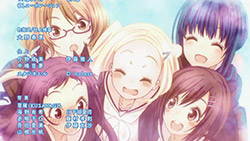 |
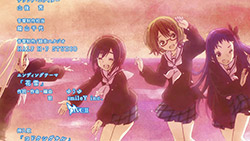 |
ED: 「花雪」 (Hanayuki) by smileY inc.
Preview
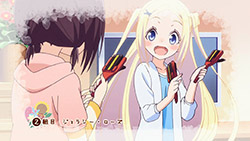 |
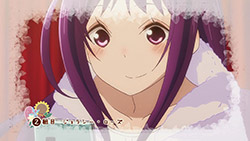 |
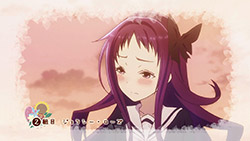 |

The new format is cool. Adds style to your blog. Keep it up.
Looks very delightful and heartwarming (and yuri). I cannot wait for more. Oh, and love the new style too.
Cool , I will check it out. I think the new style looks great.
Having animation this pretty is almost cheating. How can I not want to watch more of that?! I especially liked the way they framed the dancing scenes, they’re very graceful and there’s a real fantastical feel to them. Hana gives off a very fey vibe when she dances. I can understand why Hana called her a fairy.
Also I quite like the posting style here, it makes it much more readable than if it were just a wall of text. This seems like one you’re genuinely excited about as well, so that kind of structure would be very useful for organising your many thoughts :3
Manlyhood decreased by 10procent i usually don’t like slice a life but i like this.
If anything, watching whatever gives you joy no matter the subject matter or genre only makes you more of a man. A “real” man, whatever that might be, doesn’t give a damn. Embrace the color! Embrace the feels! Embrace the cute!
.
.
.
Shall we dance?
The show is adorable! Must keep watching.
http://tvtropes.org/pmwiki/pmwiki.php/Main/RealMenWearPink
Go on and embrace shows like this. :p
XD
Too damn cute…
I like the new format, except I would prefer a different font for the section headers.
Selecting a font that works is hard stuff >_<. If you guys have any suggestions, I'm open to them, since I just basically googled "cute Japanese fonts" and went with that.
Wingdings all the way.
I swear to god you guys, I will Wing it if you guys wish it.
Thanks for the review and beautiful screenshots!!!
woo~Yosakoi!!(yes, ur right!!Golden time had the other traditional dance: Awa odori!!) Those outfits look so awesome…want one of them <3
Is the Japanese Shall we dance w/ V6 Inohara????Or is that a different one.lol
I loveeee the classy Japanese OP (reminds me of C3 OP like Endless story and Shirushi) The release is in August though…can't wait~ XD Even the insert band song w/ Yaya is expected to be released too!!!well I'm glad cause its an catchy song!!Thank you MONAKA-san!!!
Beautiful use of Sakura and art style <3 <3 Will definately continue watching Hanayamata <3
I linked the Japanese Shall We Dance? in the post, but here it is again for convenience:
https://en.wikipedia.org/wiki/Shall_We_Dance%3F_(1996_film)
It’s a really good movie and I recommend it to anyone ^_^.
waah ur right in wiki!So inconsiderate of me to have u post the link again…
Sorry,Zanibas!!! and thanks for the link <3 Will definately check it out XD
I’m sold to this show. Comedy+Kawaii is always a good combo, throw in music and you get an enjoyable time.
awwwwwwww
This was an amazingly beautiful first episode.
I can feel for Naru. Not just because of having people around her who seem to be amazing compared to herself, but… all that talk about “just doing what you want to do” and so forth… for some of us, even knowing what we want to do is not that simple. We don’t all have a goal just sitting around in our minds that we can latch on to and pursue as thoroughly as Yaya purused her band, or Hana pursues Yosakoi. For those of us in that situation, escaping into a fantasy world can be much more pleasant than bearing the burden of people expecting us to go somewhere when we don’t even have a direction to start off in.
Yup. It’s not exactly a nice feeling when you don’t have something of your own to put your energy into. Back when I was a kid I tried countless different sports and hobbies because I felt I had to, never lasted more than a few months because I never found the thing for me.
That all changed one day when a classmate more or less dragged me to the local archery club, much like Hana dragged Naru along, and I essentially walked into paradise. The confidence boost that comes with having a passion, helped me in more ways that I can count. Probably one of the most important events in my life, that.
This could be a very powerful show, depending on where they decide to focus. But even if the focus lies mostly on the dancing and comedy, it’ll still be a great watch in all likelihood. Should be good.
Honestly this show wasn’t even on my radar until I saw the screencaps.
I’ll definitely give this a look, the art alone is just beautiful.
My only problem with this was Hana’s voice was jarring. I thought Naru’s name was interesting in that it translates (as far as I can tell) to “be” or “become”. Appropriate.
Also curious about her family given that we have a scene of her practicing what appears to be iaido (sword drawing).
I think the first ep. gives us a good insight into Naru’s problem.
If you have similar problem to her in your real life (like me), you’ll automatically understand how she feels here.
So glad you picked this one up Zanibas.
Am kinda surprised you did not mention this as a coming of age / breaking out of one’s shell story.
This show is a layered story that hits people’s buttons in different ways. Personally, I don’t perceive Naru’s story as a coming-of-age, since it’s an issue that plagues so many people from any age. However, if that’s your interpretation, I’d love to read about it here!
I guess I should have said it in the sense of that was what it appeared to me as…in contrast with knowing the source material, I mean. (Though I know ep one covered the first 4 chapters of the manga content wise.)
To me the issue of inferiority and the pursuit of the magical fit under this umbrella, though the pursuit of the fantastical or magical could also be understood in the context of the search for meaning and purpose that is out of the ordinary or “unmundane” (is that a word?) – it would never have occured to me to separate either of the themes you raised from the “coming of age” genre / framework to begin with, so your invitation in and of itself puzzled me on first reading.
You mention the theme of Naru’s story as one common to people of any age, but I guess I understand the term “coming of age” as an age specific emphasis on the search for meaning on an “unmundane” level, which indeed takes place on many different levels at different points in one’s life, but it is specifically associated with the transition from youth to adulthood – and therefore, to my mind, very applicable in Naru’s case. And of course questions of inferiority are a common difficult hurdle to overcome in the process.
Guess I am mulling aloud here in an unorganized manner – apologues if this is not very clear. ^^
That was one of the best OP sequences this year. Dancing OP/EDs are the best.
Was starting to suffer from cuteness withdrawal syndrome since Gochuumon no Usagi desu ka ended, when I hear NGNL director Ishizuka is teaming up with K-ON writer Yoshida Reiko for this absolutely cute and vividly colourful show. The latter seemingly a trademark of Ishizuka, as evident in the lush colours in NGNL.
holy cow!!!… THE OP IS SO……….. ADORABLE…
i am expecting a trend in youtube covering that dance in OP soon…
I was left wondering how Hana kept jumping so high. I kept expecting it to turn supernatural because of that and the fairy tale books. It reminded me a bit of how Benten (from Uchouten Kazoku) flew around, jumping from one place to the next.
I’m not sorry for making these with a crazed yuri fever in the slightest.
http://i.imgur.com/gAdfSMJ.jpg
http://i.imgur.com/PSDWAf0.jpg
http://i.imgur.com/erfeyEj.jpg
The manga is yuri, so it might happen.
i am expecting a lighter (for all sex and ages) slice of life plot instead of yuri.
BUT WHATEVER… the anime is so cute, that YURI PLOT is FORGIVEN.
Yuri does not have to be explicit, although some people prefer to call the less explicit ones Shoujo Ai.
I think I’ll definitely dance the yosakoi! I liked this first episode, and I think this anime has potential. We’ll see if I’m right!
at least! someone gonna blog this show
https://randomc.net/image/Hanayamata/Hanayamata%20-%2001%20-%20Large%2033.jpg
Yup…That one annoying but happy yosekoi maniac S.A.N.G (Stupid American Nylon Girl)
The OP dancing sequence drew me into the show.
No Lie.
I love the fact this girl is from Princeton, NJ. That’s less than an hour and a half away from me; I have friends from around there. How many people can claim they have an anime character from their state?
Those eyelids…
Once you see that they’re slightly tinged red, you’ll never un-see it.